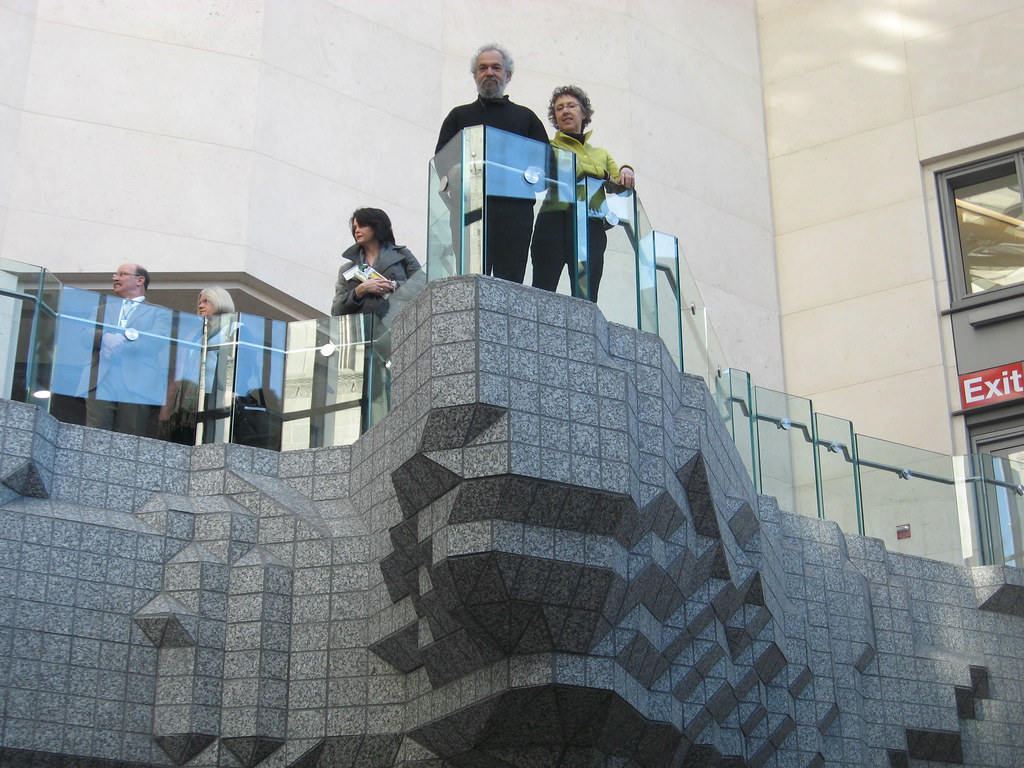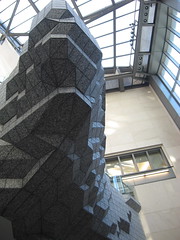 To pull the emergency brake in a new subway car today requires some thought and some action. While the picture at right shows the pullcord simply dangling at the end of a subway car, today’s emergency brakes are incased in a box so that people don’t accidentally latch onto them as the subway car lurches forward.
To pull the emergency brake in a new subway car today requires some thought and some action. While the picture at right shows the pullcord simply dangling at the end of a subway car, today’s emergency brakes are incased in a box so that people don’t accidentally latch onto them as the subway car lurches forward.
But that’s not the only notable part of the emergency brake, that oh-so-tempting way to stop a train car. Rather, as Michael Grynbaum noted yesterday, in case of emergency, subway riders are not supposed to pull the emergency brake. As Grynbaum notes, the cards — often ignored by most riders — that discuss the emergency brake include Rule No. 1: Do not pull the emergency brake. Reminiscent of Fight Club, this makes little sense.
Grynbaum continues:
So what emergency, exactly, does this emergency brake refer to? The explanation, transit officials say, is simple. If someone gets caught between the train’s closing doors, or between subway cars, and is about to be dragged to an unenviable fate, pull the cord. The train will stop, possibly saving a life.
But in case of fire, crime or a sick passenger — in fact, any other situation that could fairly be described as an emergency — the cord should be left alone. Stopping the train between stations will make it harder for help to arrive. The explanation is on the agency’s Web site, albeit accessible only after several clicks.
“We think that it is clear,” said Charles Seaton, a spokesman for New York City Transit.
The Times transit writer goes on to speak to a few straphangers who have no idea when to use the emergency brake, and he highlights last fall’s Murder on the D Train as a prime example. Sensing an emergency, riders in the car where the murder occurred pulled the brake. Some people say that action helped catch the suspected killer while others say it delayed police response to the scene of the crime and trapped innocent bystanders in a car with a killer. Either way, it made sense even if Transit officials urged riders to eschew pulling the cord.
In the end, the problem, as a psychologist explains, is one of messaging. The MTA expects its passengers to read signs that explain the emergency brake when most people just assume that an emergency brake should be used in case of any emergency. In reality, people should pull the brake only when someone is in danger of getting struck or injured by a moving train car, but that changes the concept of the emergency brake to one with which we the straphanging public are not familiar.
And so we’re left right back where we started: In case of most emergencies, please do not pull the emergency brake.
Above: Emergency Break photo courtesy of flickr user adotmanda.

 When MTA CEO and Chairman Jay Walder pledged last Friday to
When MTA CEO and Chairman Jay Walder pledged last Friday to 


 First up, the G train. For the next four weekends, there is
First up, the G train. For the next four weekends, there is  Next up, the Rockaways. The first part of the Rockaways rehab project was supposed to start wrapping up this week. But delays! The Far Rockaway-bound A platforms at Beach 67th and Beach 44th Streets are scheduled to reopen as planned on Monday, January 18, 2010, but the Manhattan-bound platforms at Beach 105th and Beach 90th Sts. and the Far Rockaway-bound platform at Beach 25th St. won’t open until Monday, January 25.
Next up, the Rockaways. The first part of the Rockaways rehab project was supposed to start wrapping up this week. But delays! The Far Rockaway-bound A platforms at Beach 67th and Beach 44th Streets are scheduled to reopen as planned on Monday, January 18, 2010, but the Manhattan-bound platforms at Beach 105th and Beach 90th Sts. and the Far Rockaway-bound platform at Beach 25th St. won’t open until Monday, January 25.  Finally, the Brighton Line. This work affects the Q as well. Anyway, on Monday at 5 a.m., the Brighton Beach/Coney Island-bound platforms at Ave. U and Neck Road will reopen. The Manhattan-bound platforms will close for a year. Trains will continue to bypass Aves. H and M until the Fall, and all Brighton Beach-bound B trains will make all local stops.
Finally, the Brighton Line. This work affects the Q as well. Anyway, on Monday at 5 a.m., the Brighton Beach/Coney Island-bound platforms at Ave. U and Neck Road will reopen. The Manhattan-bound platforms will close for a year. Trains will continue to bypass Aves. H and M until the Fall, and all Brighton Beach-bound B trains will make all local stops. 